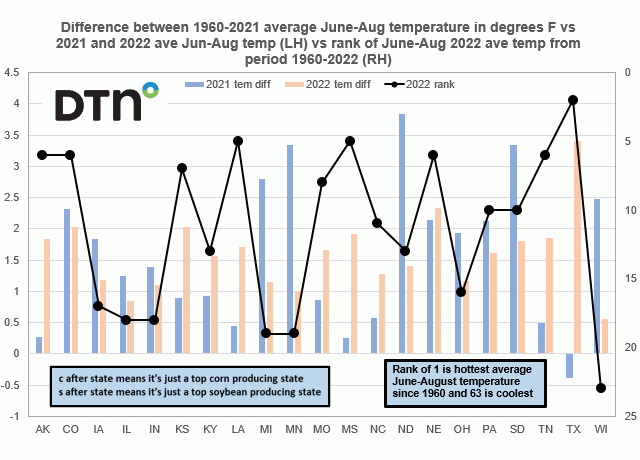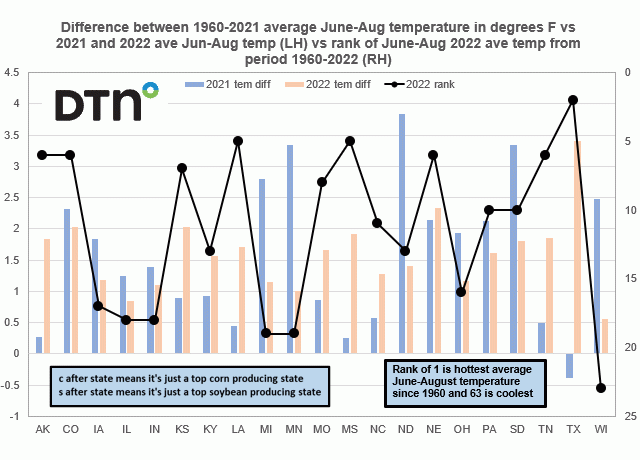Fundamentally Speaking
Hot Summer of 2022 Helped Sink Corn, Bean Yields
In prior blogs we noted that for a large number of the top corn and soybean producing states, the summer (June-August) of 2022 featured generally warmer than normal temperatures and below average rainfall, not the best combination for achieving above or even at trend corn and soybean yields as evidenced by the updated USDA yield reports.
In addition to the fact that only five of the top 21 corn and soybean growing states saw summer rainfall even above average, the summer of 2022 was also warmer than normal in these states especially in the Plains and the south.
P[L1] D[0x0] M[300x250] OOP[F] ADUNIT[] T[]
Along these lines, this chart shows the difference between the average June-August 2021 and 2022 temperature and the average June-August temperature from 1960-2021 on the left-hand axis while the rank of where the 2022 June-August temperature stacks up in the period 1960 to 2022 is plotted on the right-hand axis where a rank of 1 is the hottest average June-August temperature since 1960 and 63 is the coolest.
It was a hot summer in much of the U.S. and certainly where the row crops are grown as not a single of the 21 states had below average summer temperatures following up on a year when Texas in the summer of 2021 was the only top state to see below average summer readings.
Not the case this year in the Lone Star state as their June-Aug 2022 average at 84.8 degrees, a whopping 3.41 degrees above the 1960-2021 June-Aug average of 81.4 degrees Fahrenheit, making this the second hottest summer in Texas since 1960 as evidenced by the number 2 ranking.
Other states seeing very hot readings this past summer include both LA and MS having their fifth hottest summer since 1960 and AK, CO, NE, and TN having their sixth hottest summer since 1960.
Interestingly the northern states that really baked last summer saw milder readings yet states such as MI, MN, ND, SD, and WI still saw this past summer temperatures well above average with Wisconsin perhaps seeing the "coolest" readings as they were the least elevated relative to their 1960-2021 average at 0.55 degrees hotter.
(c) Copyright 2022 DTN, LLC. All rights reserved.






Comments
To comment, please Log In or Join our Community .